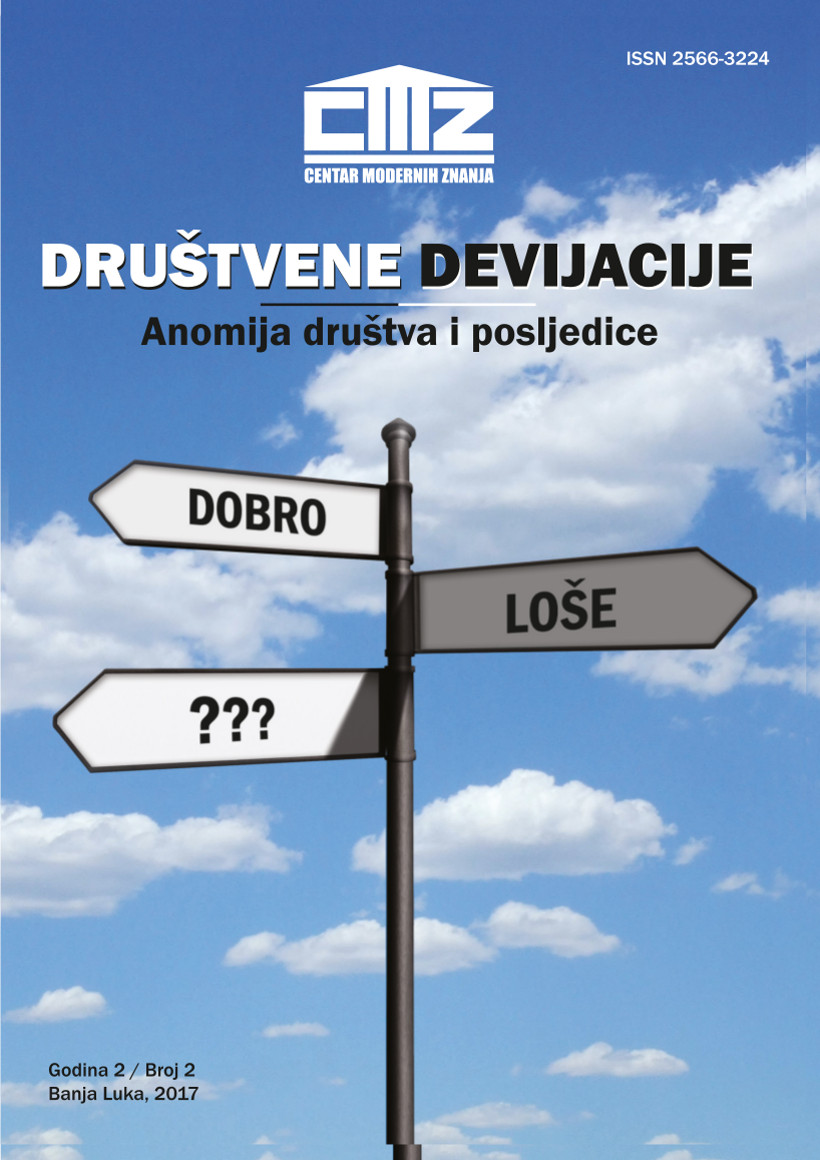


Keywords: educators; lifelong learning; competencies; constipation; treatment;
We know that adequate treatment and successful re-socialization of sentenced persons in penal institutions implies the use of modern forms, methods and means of work, carried out by competent and motivated educators. It is a common opinion that most educators, in their initial education, did not receive adequate preparation for work in penal institutions, ie. that there is a gap between the theoretical preparation of educators in initial education and the requirements for professional engagement practices. There is a need for new knowledge, skills and abilities, as well as an opportunity to improve them. It is this scientific monograph that points to the general and specific competencies of educators in penal institutions, as well as the motivation of educators to learn and improve, that is, lifelong learning and professional development.
More...
Keywords: communication; message; conflict; conflict management; compromise;
Communication is the exchange of messages between the recipient and the recipient of messages. It is successful if the interlocutors understood the message equally. The word of communication literally means to do something general or common. Communication is the basis for communication. It becomes the cause and consequence of all interactions among people and thus forms the basis of human survival. If communication is not clear enough or the information is vague and the views of individuals are different, conflict can occur. Conflicts are an indispensable part of human functioning, and successful management becomes more and more important to them. Conflict management is a process and activity aimed at preventing the dysfunctional and destructive consequences of conflicts and directing the energy of conflict situations in order to understand the real problems that confront us and to identify the rational solutions for their overcoming, and this is only possible through communication. In this book, we have investigated the relevant bibliographic sources dealing with various aspects of communication. In terms of the conceptual definition of communication, we have identified the genesis of its development through the time and importance of communication in contemporary civilization. As the conflict and its resolution are the focus of this work, we paid particular attention to the etiology and the process of conflict management. We have surfaced and presented some of the successful conflict resolution models. This book can help researchers dealing with specific phenomena of communication processes, as they have shown the relevant theoretical settings of the art of communication.
More...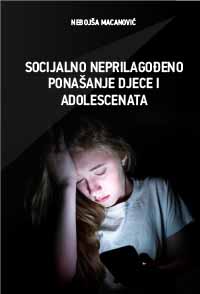
Keywords: juvenile delinquency; behavioral disorders; peer violence; cyberbullying;
The book entitled "Socially maladapted behavior of children and adolescents" stemmed from the author's desire to present in one place the most indicative forms of socially maladapted behavior of children and youth, and present them as they occur in certain stages of growing up. We have supported all forms of socially maladapted behavior with numerous examples and newspaper articles in order to present this social problem as objectively as possible. The content of this book is actually an introduction to the field of social pedagogy. Although we have dealt with numerous forms of socially maladapted behavior, we have focused on socially maladapted behavior of preschool children, peer violence, electronic violence (cyberbulling), and juvenile delinquency. These four forms of inappropriate behavior are certainly the most risky and the most recognizable in the media, in this time we live in. Considering numerous classifications of behavioral disorders, there would certainly be some criticism from the scientific aspect, due to the choice of these topics, but from the aspect of social pedagogy and its subject of study, we believe that these topics are the burning problem of our society when it comes to socialization and healthy growth. We believe that it is especially important to present and analyze these deviant phenomena at children and young people in one place, in order to actualize behavioral disorders and see the consequences they cause. For preschool children, it is evident that there are numerous indicators that indicate socially maladapted behavior of children at that early age. Therefore, it is very important to identify such behavior by preschool children and provide adequate professional assistance, so as not to lead to more serious consequences and disorders in the later development of personality and social behavior.
More...
Keywords: juvenile criminality;BiH;socialization;
As parents, we often ignore the many problems that adolescents face, believing that it always happens to other children, and that it will never happen to us. Unfortunately, today we are increasingly dealing with the consequences of such problems. That is why identifying a problem is as important as solving it. One of the raising problems of Bosnian society is the delinquent behavior of young people, which is becoming a symbol of growing up in a dysfunctional society, and a subculture that is increasingly accepted by young people. Violent behavior, criminal acts, the need to be in the company of older criminals, drugs and alcohol consumption, dropping out of regular schooling are just some of the accompanying phenomena of delinquent behavior of young people. The disturbed value system and the anomie of society create ideal conditions for the development of behavioral disorders of children and young people. Juvenile delinquency is a phenomenon that is the result of inadequate socialization, upbringing and growing up conditions of the child. However, when it happens, it is necessary to apply the most effective educational measures in order to suppress and correct such behavior. In some situations when certain procedures and educational measures did not give positive results or when serious criminal offenses were committed, juveniles are sent to a correctional facility and juvenile prison. Such institutions seek to resocialize juvenile offenders, to change their criminal attitudes and behavior, build an acceptable value system, complete primary education and vocational training, as well as build work habits and develop certain competencies and social skills.This scientific monograph represents the desire of the author with rich experience in working with juvenile delinquents to transfer his knowledge to students who are being educated for one of the helping professions. The book gives a scientific perception of how to re-educate minors, and what are the procedures and stages in working with them. This book is actually, to a large extent, a combination of pedagogy and law, but also of numerous other social sciences that deal with this issue. In addition to the legal framework on criminal sanctions imposed on juveniles, a pedagogical overview of the role and importance of re-educational treatment on which the success of re-socialization of juveniles depends is given.
More...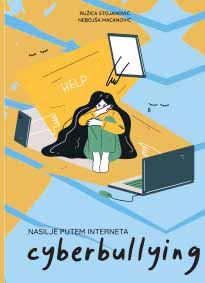
Keywords: internet violence; cyberbullying;
The scientific monograph entitled "Internet Violence - Cyberbullying " gives a perception of a new and increasing form of violence among young people -cyberbullying. Internet violence is a growing problem among the young, but also older population. In this scientific monograph, in addition to the theoretical concept, in which we presented how and why cyberbullying occurs, we presented an interesting study that confirms our assumptions about the growing presence of digital violence in Bosnia and Herzegovina. In our research, we relied on students and school as a place where these problems are often identified among young people.The subject of the research includes identifying the presence and forms of cyberbullying among high school students in the municipality of Modriča, as well as researching the relationship between the manner of cyberbullying and educational and demographic characteristics of students who participated in this research. In accordance with the set hypotheses and research tasks, the sample included 343students, both male and female, from the High School Center "Jovan Cvijić"in the municipality of Modriča. The results of the research we presented in this paper show that cyberbullying is present among students, and that all forms of cyberbullying are present. Students were more likely to be victims than to abuse others. The victims of cyberbullying were more often boys. Cyberbullying is most present among first grade high school students, then among students with better school performance, as well as among students living in the city. Also, the results of the research tell us that the prevention of this problem is poorly developed inhigh schools in the municipality of Modriča. Based on the data we presented in this scientific monograph, we tried to point out the fact that at any moment today we are in danger of becoming a target of cyber bullies, not only children and youth, but also the adult population. But we are witnessing that children and young people are the most accessible targetand the most vulnerable part of the population in this field. Today, children and young people grow up with smartphones and social networks and they are an integral part of their daily lives, but we must be aware that they will become both an inevitable and growing companion of their growing up. That is why it is necessary to understand the real risks and problems that cyberbullying brings and to protect young people, but also the adult population. It is unacceptable to ignore this problem, it is necessary to develop more trust in services and institutions that can help us, and to develop mechanisms to reduce the problem of cyber violence.With this research, we wanted to encourage others to deal with the problem of cyber violence in their local communities, which can contribute to the development of programs to prevent and combat this problem at the local level.This scientific monograph provides clear guidelines, but also a good scientific basis for further development of action research that will address this problem,especially the development of prevention programs and effective strategies in the actions against cyberbullying at the government institution level.
More...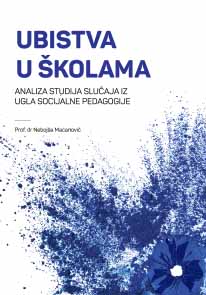
Keywords: murders; school; students; social pedagogy;
The scientific monograph "Murders in schools - analysis of case studies from the point of view of social pedagogy" resulted from the author's desire to use scientific analyzes of numerous tragic events that happened in schools to draw the attention of the educational system, but also to society as a whole, to the need to much more attention must be paid to the personality of each student, his attitudes, thoughts, behavior, interests, needs, outlook on life and environment. Today, children under the influence of social networks live in a virtual world, living for instant gratification without empathy for others. Youth violence is on the rise. The consequences of violence are often tragic. Violence in schools is often linked to murders in schools. The crimes they commit are much more brutal, aggressive and cold-blooded, and the perpetrators are often children under the age of 14. From individual case studies, we will see that the violence at school was in many cases only a preliminary stage of later mass murders. Social pedagogy deals with behavioral disorders, and from the scientific aspect of this pedagogical discipline we will try to give some possible answers as to why and what are the motives of these tragic events. In the many case studies presented, this book will not provide definitive answers as to the causes that led to numerous tragic murders in schools, but it will encourage, stimulate and direct the greater attention of parents, teachers, school pedagogues and psychologists, social workers, trainers in cultural and sports sections and clubs and others who communicate and work with children on a daily basis to pay more attention if something is happening with the children and if there is a problem that they may be skillfully concealing.
More...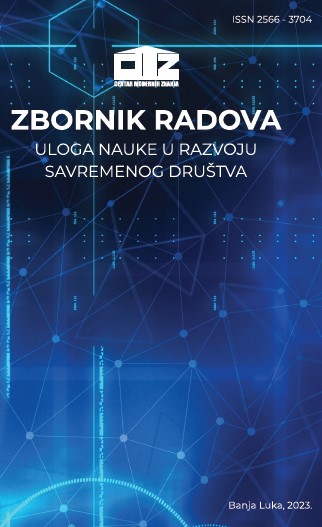
Keywords: Family business; Foreign policy; Bosnia and Herzegovina; EU; Strategic management; Educational system; Digitalization; Management and safety; juvenile delinquency; Family dysfunctionality; Social criminology; social development; mental health;
Sadašnja globalna ekonomska kriza je tolika da obim negativnih efekata te krize kao i njeno trajanje teško je predvidjeti, jer će oni biti različiti od zemlje do zemlje. Također, ne postoji jedinstven model mjera za prevazilaženje tih efekata. Dok su neke zemlje bilježile pad privrednih aktivnosti već u trećem kvartalu 2008. godine, neke se tek sada počinju suočavati sa tim. Također, dok jedne zemlje primjenjuju restrikciju na potrošnju, druge traže načine kako da povećaju tražnju. Teško je pronaći neki set adekvatnih mjera koje bi se mogle prekopirati i primjeniti u BiH. U odgovoru na utjecaj finansijske krize, razvijene zemlje su reagirale programima za povećanje likvidnosti tržišta, te su ogromna sredstva izdvojena i predviđena da budu „ubrizgana“ u njihove privrede. Ipak, čini se da je postignut zajednički stav oko generalnog pristupa koji se sastoji u tome da se nelikvidnost tržišta, a što se smatra osnovnim uzrokom smanjenja tražnje, a samim tim i proizvodnje, može izliječiti jedino dodatnim sredstvima koja će se kroz različite kanale i forme staviti na raspolaganje privredi. Događanja u posljednjoj deceniji prošlog milenijuma su zaustavila ekonomski razvoj Bosne i Hercegovine, i što je najgore, u velikoj mjeri uništila njen decenijama razvijani naučni potencijal, kadrove i infrastrukturu. Danas, sa znatno oslabljenom ekonomskom osnovom, teško se obnavlja naučnoistraživački potencijal i sa dosta poteškoća prihvataju standardi i uloga koju nauka i naučnoistraživačka djelatnost imaju u Evropi, pa i u našem užem okruženju. Znanje ima moć, a nauka je nabolje sredstvo za unapređenje takve moći. Digitalizacija znanja se reflektuje sve više i na digitalizaciju društva. Znanje i sama nauka doprinose razvoju savremenog društva, te je njihova povezanost i uslovljenst time još značajnija.
More...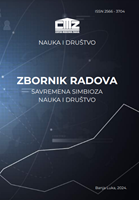
Keywords: Science; Society; Modern society; Management; planning; social inclusion; geopolitical identity; underdeveloped countries; international relations; democratic development;
Znaĉaj nauke za ĉovjeka i ljudsko društvo vrlo je velik. Nauka je naĉin spoznaje svijeta. A svijet u kojem mi ţivimo je veoma ovisan o nauci i tehnologiji. Da bismo bolje navigirali ovim svijetom, potrebno je da znamo ponešto o osnovnim nauĉnim fenomenima – kako stvari rade, kako se nešto dešava i kako funkcionira naš organizam. Zato ulaganje u nauku i obrazovanje, a samim tim i u ljudske resurse, donosi veliku korist za pojedince i društvo u cjelini. Pojedinci i društvene grupe zauzimaju odreĊeno mjesto u društvu na osnovu znanja kojim raspolaţu. Ono unapreĊuje sve oblasti ĉovjekovog ţivota i djelovanja. Društvo i nauka su ĉvrsto vezani i nalaze se u meĊusobnom odnosu. Društvo je stvaralo uslove i davalo društveni ambijent u kome se nauka mogla razvijati. S druge strane, nauka je omogućavala brţi razvoj pojedinih društvenih oblasti i cijelog društva. Povoljni društveni uslovi uticali su na nastanak brojnih izuma, patenata, tehniĉkih rješenja i modernizacija. Razvoj informatike dodatno je ubrzao razvoj i povezivanje preduzeća, multinacionalnih kompanija, drţava regija i svijeta. Povećana je razmjena ljudi, dobara, proizvoda i usluga. Ĉetvrta industrijska revolucija otvorila je neslućene mogućnosti razvoja i dalje promjene društva, društvenih odnosa. Sve ove promjene utiĉu pozitivno i na razvoj cjelokupnog društva, ali i demokratije i ljudskih prava. Sve ovo govori o jednoj simbiozi koja je rezultirala da nauka i društvo postanu jedna savremena forma ljudskog ţivora i razvoja civilizacije u XXI vijeku. Zbornik radova pod naslovom „SAVREMENA SIMBIOZA - NAUKA I DRUŠTVO“ je publikacija nauĉnih radova u okviru nauĉnog skupa „Nauka i društvo“. Ova publikacija predstavlja nauĉne i struĉne radove već dokazanih nauĉnih radnika i istraţivaĉa, ali i onih koji su na poĉetku svog nauĉnog rada. U Zborniku su objavljeni radovi nauĉnih radnika iz Bosne i Hercegovine i Republike Srbije, koji su u skladu sa njihovim nauĉnim iskustvom, uz dobronamjerne recenzije, usklaĊeni i adekvatno kategorisani. S obzirom na multidisciplinarnost teme zbornik obuhvata radove iz raznih nauĉnih disciplina kao što su: ekonomija, pravo, bezbjednost, defektologija, politiĉke nauke, sociologija i pedagogija. Radovi su aktuelni i obraĊuju savremena društvena pitanja i probleme, ali i teorijska i praktiĉna dostignuća pojedinih nauĉnih disciplina. Na takav naĉin dajemo podsticaja svim mladim ljudima da kroz svoj nauĉni rad daju doprinos u rješavanju brojnih društvenih problema. Upravo i prilikom izbora tekstova ureĊivaĉki odbor je ţelio da takvi radovi budu prioritetni u ovom zborniku, te je i sam naziv istog proistekao iz te ideje i potrebe. Nauĉni radnici, posebno oni koji su na poĉetku svoje akademske karijere, trebaju podršku kako bi istrajali u svom usavršavanju i nauĉnom dokazivanju. Ovaj Zbornik, kao i sam nauĉni skup, nastao je iz entuzijazma nekolicine profesora okupljenih oko Centra modernih znanja, da kroz ovakav vid nauĉnog rada otvore vrata nauke svim mladim nauĉnim radnicima i istraţivaĉima kako bi i njihova empirijska istraţivanja i dobijeni rezultati bili prezentovani široj javnosti. TakoĊe, dosadašnja saradnja sa kolegama iz Beograda i Nikšića rezultirala je da izdavaĉi ovog zbornika budu tri udruţenja iz regiona koja već duţi vremenski period saraĊuju organizujući razne edukacije. Brojni radovi otvaraju razne dileme i ostavljaju mjesta diskusiji kako i na koji naĉin nastaviti i razvijati razne nauĉne discipline. S tim u vezi ostavljamo vam prostora, da i vi svojim sugestijama i razmišljanjima, zajedno sa autorima traţite efikasnija rješenja i mogućnosti. Ovaj Zbornik nije konaĉan, jer nauka svaki dan traga za neĉim novim pa tako i autori i ureĊivaĉki tim ove publikacije.
More...
Keywords: Violence; Sociology; Education; Human Resources; Juvenile Delinquency; Inclusive Education; Criminology; Deviant Behavior; Prisoner Rights;
Društvo i nauka su čvrsto vezani i nalaze se u međusobnom odnosu. Društvo je stvaralo uslove i davalo društveni ambijent u kome se nauka mogla razvijati. S druge strane, nauka je omogućavala brži razvoj pojedinih društvenih oblasti i cijelog društva. Povoljni društveni uslovi uticali su na nastanak brojnih izuma, patenata, tehničkih rješenja i modernizacija. Razvoj brojnih naučnih disciplina dodatno je ubrzao razvoj i povezivanje preduzeća, multinacionalnih kompanija, država regija i svijeta. Povećana je razmjena ljudi, dobara, proizvoda i usluga. Četvrta industrijska revolucija otvorila je neslućene mogućnosti razvoja i dalje promjene društva, društvenih odnosa. Sve ove promjene utiču pozitivno i na razvoj demokratije i ljudskih prava. U svijetu se otvaraju opšteljudski problemi egzistencije, povećanja populacije stanovništva, kvaliteta hrane, ugroženosti životne sredine, moguće zloupotrebe nauke, tehnike i naučnih dostignuća. Svijet bez vizije i kvalitetnog vođstva, sa mnogo osilacija, različitih parametara, sve bi više trebao postavljati pitanja morala i etike. Konferencija ima za cilj prezentaciju dostignuća iz područja društvenih i humanističkih studija, međusobnu razmjenu znanja, iskustava i ideja, intenziviranje saradnje između institucija i organizacija, te nalaženje zajedničkih rješenja za probleme sa kojima se susreće savremeno društvo. …
More...